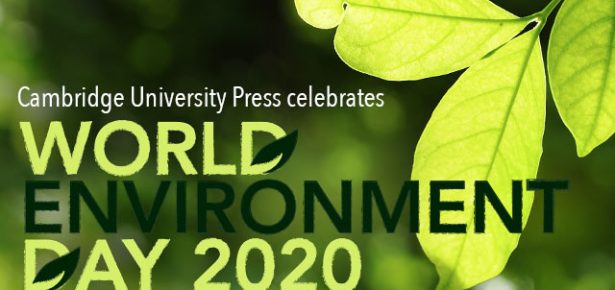
June 5th is World Environment Day, an annual event of the United Nations Environment Programme since 1974. This year the theme is Time for Nature.
June 5 falls at a hectic time in 2020, with one crisis nested inside another like Russian matryoshka dolls. The United States is roiling in civil unrest more serious than any since 1968, reeling from unemployment worse than any since 1936, and, like most of the rest of the world, raveled in a public health crisis more lethal than any since 1918. In the background remains the slowly unfolding environmental crisis – of climate change, biodiversity loss, toxic pollution, soil degradation and much else besides.
The COVID-19 pandemic is an environmental history event as well as a public health crisis. The pathogen responsible, the SARS CoV-2 virus, until November of 2019 circulated inconsequentially among bat colonies. Like a handful of other coronaviruses before it, SARS CoV-2 leapt to humans and became the latest in a lengthy string of so-called emerging diseases. At least three-quarters of the pathogens behind the hundreds of emerging infections recorded since 1945 are species-jumpers like SARS CoV-2. It is sobering to ponder the fact that the world harbors billions, perhaps trillions, of different viruses and only 250 of them – so far – replicate in human cells. Most are not configured to be able to prosper in human bodies, but some no doubt are. More species-jumping viruses are surely coming our way, following in the wake of SARS, MERS, Ebola, HIV, Marburg, Lassa, zika, and longer ago, rabies and measles — to name a few.
The chief reason that assaults from emerging diseases seem to be coming thick and fast is because the pathogens, viruses in particular, are getting more opportunities to leap to our bodies. Humans rub shoulders with unfamiliar species more frequently in the world’s biodiversity hotspots. We burn forests and shrink available habitat for wild creatures. We hunt them more successfully than ever. So those viruses with the right bag of tricks to circulate among us have more chances than ever to get to us. Most of them come from bats or rodents, social creatures like ourselves, although they often jump to our bodies via intermediate hosts such as civet cats or the pangolins suspected in the case of SARS CoV-2. And when they do jump to us, our penchant for jet travel and urban habitats provide ample opportunity for them to infect millions if our public health defenses are unable to prevent viral spread.
In countless ways, the human relationships with the natural world are changing. But they always have. That is part of the subject matter of environmental history, as evidenced in dozens of titles in our series Studies in Environment and History. Awareness of, and anxiety about, our changing relationships with nature lies behind environmentalism, the outlook that is responsible not only for World Environment Day but the myriad movements and institutions that seek to regulate, and normally to moderate, the human impact on environments. That too is part of the subject matter of environmental history, and amply reflected in our series.
So, as UNEP wishes to remind us, it is Time for Nature. As environmental history can remind us, it always has been time for nature.
Latest Comments
Have your say!